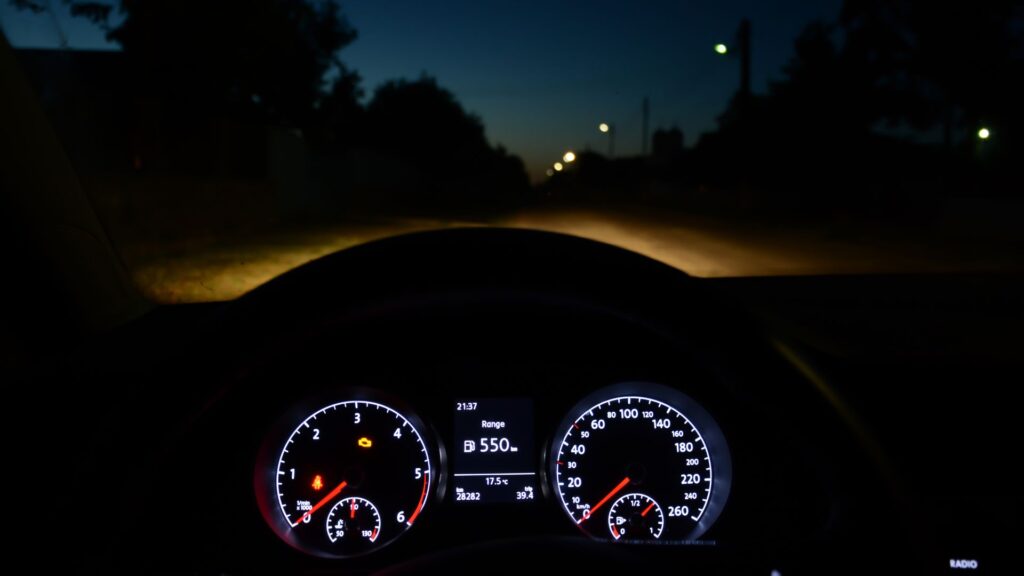Halloween Safety Driving Tips for Drivers: Don’t let trick-or-treaters spoil your night. Learn the essential Halloween safety tips for drivers to avoid accidents and ensure a safe, spooky evening.
Halloween Safety Driving Tips for Drivers
Halloween is one of the riskiest nights of the year for pedestrians, particularly children. The combination of early darkness, elaborate costumes impairing visibility, and high levels of excitement leading to erratic movement creates a challenging environment for anyone behind the wheel.
For responsible drivers, understanding these unique risks and adopting specific defensive Halloween Safety Tips for Drivers is important. This guide provides comprehensive strategies to help you navigate the spooky holiday safely, protect trick-or-treaters, and keep your vehicle in top condition.
Halloween Safety Driving Tips for Drivers
Halloween Safety Driving
The evening of October 31st presents an atypical profile of risk that sets it apart from typical weekend driving. Statistically, the period between 4 p.m. and 10 p.m. sees a drastic surge in pedestrian incidents, particularly involving young children.
The excitement of trick-or-treating frequently trumps common judgment, making children more likely to dart into the street without looking. Aside from the sheer number of pedestrians, other variables contribute to the increased risk. First, the dark surroundings, combined with masks and low-quality costume materials, drastically decrease children’s visibility. Second, many vehicles underestimate the volume of pedestrian traffic in residential areas during peak hours. Finally, due to the social nature of the holiday, many adults are strolling, often congregating near curbs or driveways, further constraining vehicle navigability.
Adopting proactive Halloween driving safety measures is not just recommended—it’s essential for preventing tragedies. A driver needs to keep exceptional awareness, as if every shadowy figure along the curb is about to jump into their path.
Pre-Drive Vehicle Check: Ensuring Peak Safety Performance
Before you even pull out of your driveway on Halloween night, a thorough vehicle inspection is a crucial element of your safety strategy. While vehicle performance may sound more related to speed than safety, responsiveness is vital when navigating crowded streets where split-second braking matters.
Ensuring your car is performing optimally can mean the difference between a quick stop and a dangerous slide. First, focus on your lighting system. Check all headlights, tail lights, brake lights, and turn signals. Given the importance of nighttime visibility tips on Halloween, even a single faulty bulb significantly compromises your ability to see and be seen. Ensure your headlights are clean and properly aimed. Secondly, examine your tires. Proper tire pressure and tread depth ensure maximum traction, which is critical if you need to brake suddenly on wet leaves or slick pavement.
A well-maintained vehicle, often the result of professional tuning and care found at places like YST Tuning, guarantees that safety systems operate precisely when needed. Finally, test your brakes. If you notice any squeaking, grinding, or soft response, have them inspected immediately. On a night when your stopping distance is your primary defence, compromising on brake integrity is simply not an option.

Low-Speed, High-Vigilance Driving Tactics
Speed reduction is the single most effective tool available to drivers on Halloween night. The posted speed limit is the absolute maximum, but in dense residential areas, you should be driving significantly slower—often 5 to 10 mph—to grant yourself the reaction time necessary to manage unexpected events. When traversing areas with heavy foot traffic, employ “crawling” tactics. This means keeping your speed slow enough that you can stop instantly if a child darts out from between parked cars.
Importantly, your eyes should be moving constantly. Do not focus solely on the road directly ahead; scan far ahead, check sidewalks, look under parked cars (where you might spot feet), and constantly check both side mirrors. Peripheral vision must be maximized.
Another tactical consideration is the use of the horn. While generally frowned upon in residential areas, a quick, light tap of the horn can be a lifesaver if you see a child approaching the curb but not looking. The sound provides a necessary warning without causing undue panic. However, avoid aggressive horn usage, which can confuse children and cause them to move erratically. Remember, the primary focus of all Halloween Safety Tips for Drivers is maximizing the distance and time available for avoidance maneuvers.
Mastering Nighttime Visibility and Lighting
Reduced visibility is the primary antagonist on Halloween night. Not only is it dark, but the environmental factors (fog, rain, falling leaves) often exacerbate the challenge. To combat this, drivers must master their use of vehicle lighting and internal focus.
First and foremost, keep your windshield meticulously clean, both inside and out. Interior grime, especially, can scatter headlight glare, creating halos that obstruct your view of small objects. Ensure your wiper blades are functional and your washer fluid reservoir is full. When it comes to vehicle lights, use low beams consistently in residential areas. While high beams provide greater distance vision, they can temporarily blind pedestrians and other drivers, which is counterproductive in crowded settings. If you are struggling with nighttime visibility tips due to rain or fog, use your fog lights—if equipped—correctly, aiming them low to cut through ground-level moisture without causing excessive glare.
Furthermore, minimize interior distractions. Turn off unnecessary interior lights, and severely dim your dashboard and navigation screens. Bright interior light compromises your night vision adaptation, making it harder for your eyes to adjust to the darkness outside the vehicle. Every effort to improve external visual clarity directly contributes to successful pedestrian safety awareness and accident prevention.
Navigating Neighborhoods and Residential Areas
Residential areas are the epicentre of trick-or-treating activity, requiring specialized driving protocols. Always assume that children are present, even on streets that typically have little foot traffic.
Exiting and Entering Driveways: This is a high-risk manoeuvre. Backing out of a driveway requires extraordinary caution. If possible, have an adult spotter guide you. If you must back up alone, proceed extremely slowly, checking all angles multiple times, remembering that small children are below the line of sight for typical reversing cameras. Many drivers choose to reverse into their driveway upon arrival, allowing them to pull forward when leaving, which provides a much clearer line of sight.
Passing Parked Cars: Never pass cars that are stopped and letting off children. Wait patiently. Children often treat the street like a parking lot and will ignore traffic as they rush toward the next house. When passing any parked vehicle, leave as much lateral space as possible—at least a full car door’s width—to account for doors opening or children stepping out unexpectedly. This rule applies equally to maintaining high levels of pedestrian safety awareness around mail trucks or buses, but the urgency is multiplied tenfold on Halloween.
Intersections and Stop Signs: Treat every stop sign as if it were a four-way intersection, regardless of the actual designation. Come to a complete, deliberate stop, and pause for several extra seconds to scan all corners before proceeding. Given the darkness, children may mistake a moving vehicle for a stationary one. Never wave a child across the street unless you are certain that no other vehicle is approaching.
Dealing with Costumes and Distracted Pedestrians
Costumes are a central pillar of the Halloween experience, but they are a major contributor to safety challenges. Drivers must adapt to the limitations that costumes impose on both children and adults.
Limited Visibility for Pedestrians: Many popular masks, hoods, and oversized accessories severely restrict a child’s peripheral vision and sometimes even their forward view. They cannot see you approaching, even if your headlights are on. Furthermore, dark costumes (e.g., ninja, vampire, black cat) offer zero contrast against the night sky, making even careful pedestrians nearly invisible. This reinforces the need for slow driving and active scanning, which forms the cornerstone of proactive Halloween driving safety. If you spot a group, assume the child with the darkest costume or the largest mask is the hardest to see and react accordingly.
Lack of Reflectivity: While safety advocates push for reflective tape on costumes, the reality is that most generic costumes are made of non-reflective materials. This deficiency in visibility makes nighttime visibility tips for drivers even more critical. You must generate the light and the focus necessary to compensate for the pedestrian’s lack of illumination.
Distracted Adults: It’s not just the kids who are distracted. Parents supervising children are often looking at their phones, organizing candy bags, or talking to neighbors, leading to lapses in pedestrian safety awareness. They may forget to guide children safely or step back into the street without checking traffic. Treat all adults on the street as potentially distracted parties who are not prioritizing traffic flow. The responsibility rests entirely with the driver to maintain control and anticipate these human errors.
The Critical Danger of Impaired Driving
While the focus is often on trick-or-treaters, Halloween night is also associated with parties and social gatherings, leading to a spike in impaired driving incidents. According to data tracked by various safety organizations, Halloween sees an increase in alcohol-related crashes. This makes sober driving the most critical rule of all Halloween Safety Tips for Drivers.
It is absolutely imperative to plan if you intend to consume alcohol or any impairing substances. Utilize ride-sharing services or taxis, or designate a sober driver. If you encounter an impaired driver on the road, maintain a significant distance and report them immediately to the local authorities, providing their vehicle description and location. Impaired drivers pose a triple threat: they are less capable of adhering to speed limits, their reaction time is severely delayed, and their judgment regarding pedestrian distance is compromised. The presence of dense foot traffic and the inherent unpredictability of children make driving under the influence on Halloween unforgivable.
Ensuring your vehicle remains responsive and reliable is a year-round commitment to safety. By actively practicing these robust Halloween Safety Tips for Drivers, focusing on enhanced pedestrian safety awareness, and maintaining excellent nighttime visibility tips, drivers can play their part in ensuring that Halloween remains a fun, memorable holiday, free from preventable accidents. Extreme caution isn’t overkill—it’s responsible driving.





